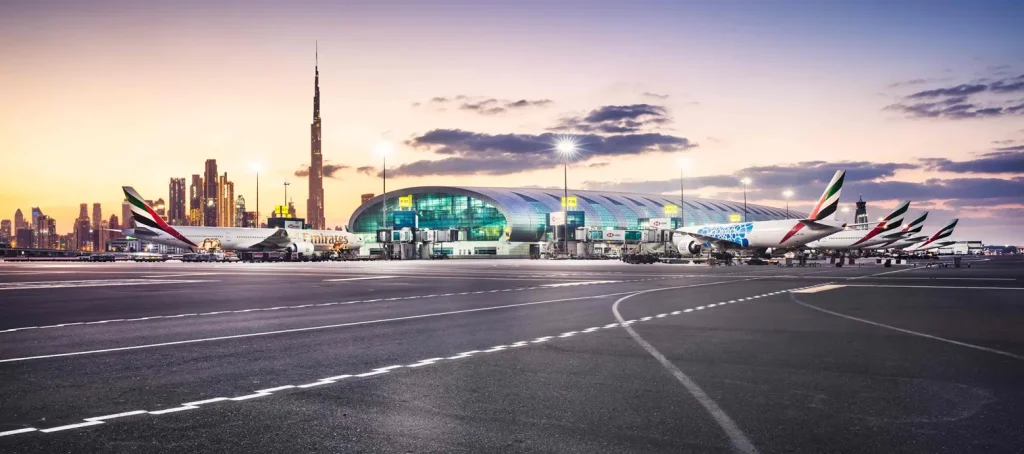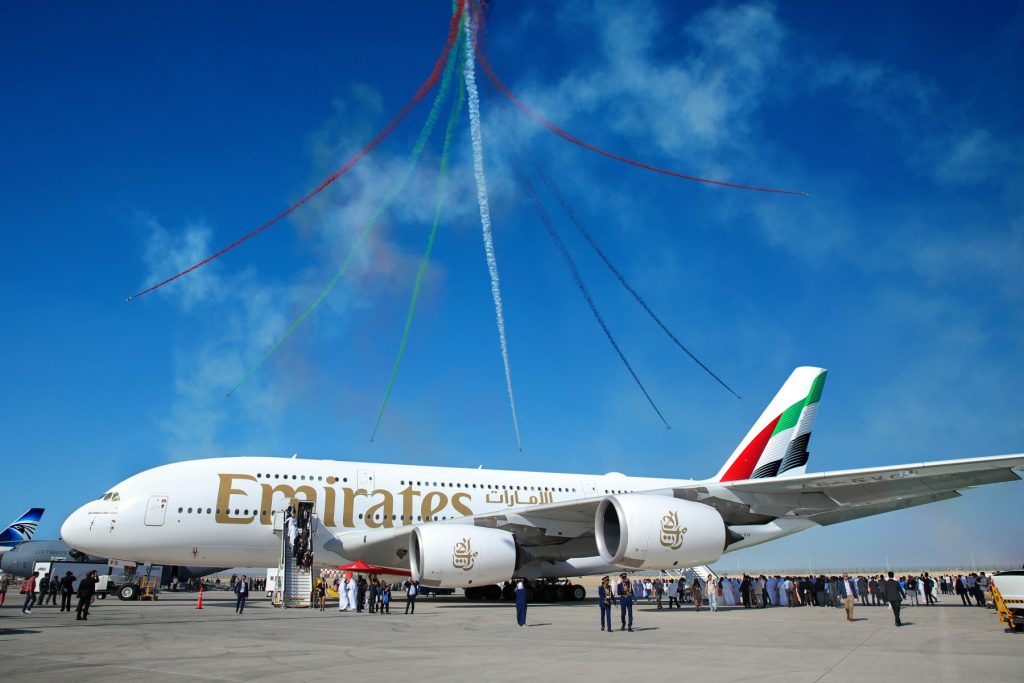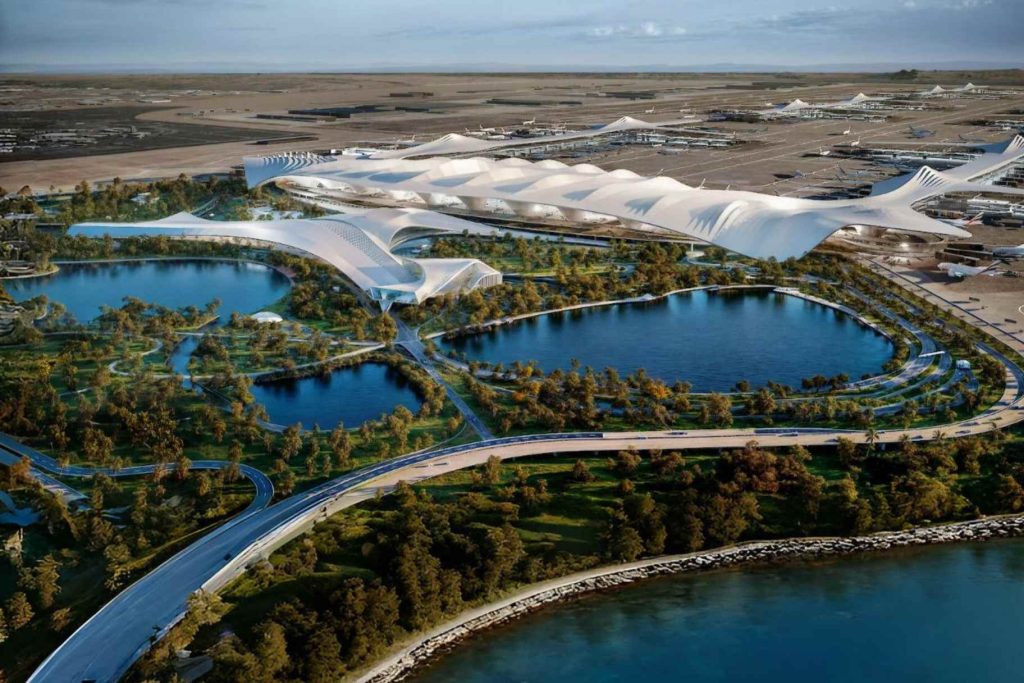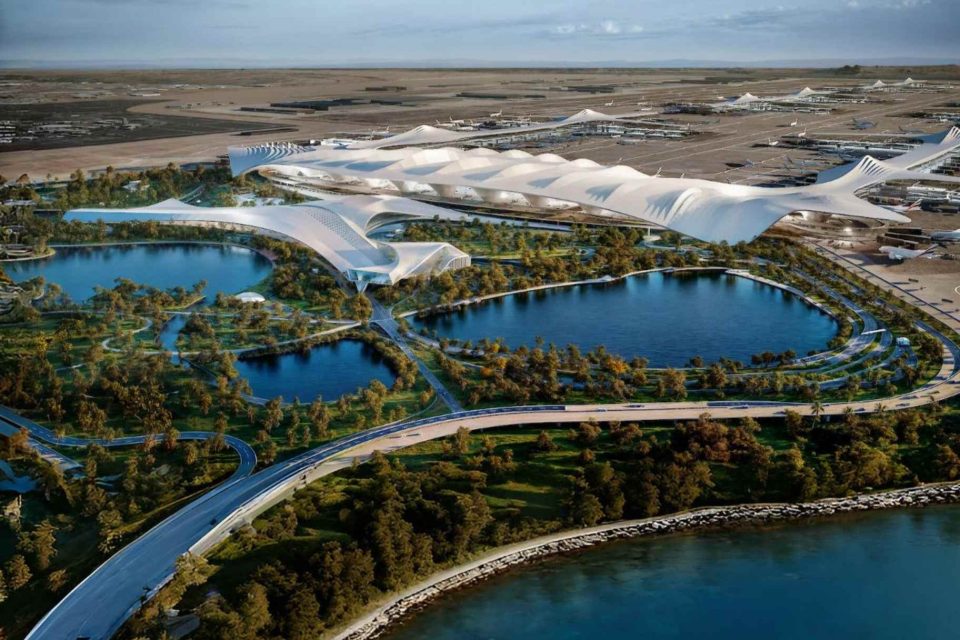Middle Eastern airports are increasingly dominating global widebody aircraft traffic driven by ambitious airlines and strategic investments. In particular, Gulf mega-hubs like Dubai and Doha now rank among the world’s leaders in twin-aisle flight operations, like the Boeing 777, 787, and Airbus A350.
Here’s which Middle East airports lead in widebody activity, why they’ve grown so rapidly, how new infrastructure (especially Dubai’s Al Maktoum International) will boost capacity, and where future growth is expected from.

Leading Middle East airports for widebody traffic
Dubai International Airport (DXB)
Dubai is currently the region’s busiest hub for widebody flights. In April 2025, DXB handled 8,877 widebody departures (averaging around 296 per day), the second-highest total of any airport worldwide. About 49% of all takeoffs in Dubai are on twin-aisle jets and DXB is the world’s busiest airport for Airbus A380 and Boeing 777 movements.
Doha’s Hamad International Airport (DOH)
Doha has rapidly become another widebody powerhouse. It saw about 6,710 widebody takeoffs in April 2025, placing it among the top five airports globally. Doha stands out for having 66% of all departures operated by widebody aircraft, which is one of the highest.
Qatar Airways operates the vast majority of Doha’s twin-aisle flights (over 90% of them). The result is that two-thirds of all flights at DOH are on long-haul capable jets, serving destinations across Europe, Asia, Africa and the Americas.
Other regional hubs
Beyond Dubai and Doha, other Middle Eastern gateways also leverage widebodies. Abu Dhabi (AUH), for example, hosts Etihad Airways’ primarily widebody fleet, albeit on a smaller scale than its Gulf peers.
Similarly, Istanbul’s new airport straddles Europe and the Middle East and sees heavy widebody usage by Turkish Airlines. These airports, however, still trail the concentrated twin-aisle operations seen at Dubai and Doha, which remain the region’s clear leaders in widebody traffic.
3 Strategic drivers for growth

- All-widebody fleets
Emirates and Qatar Airways have built their business on widebody aircraft. Emirates uniquely operates an all-widebody fleet, and as of early 2025 it had 249 twin-aisle jets (including 116 Airbus A380s and 133 Boeing 777s) in service.
This massive capacity allows Dubai to funnel passengers through fewer, larger aircraft. Qatar Airways similarly emphasises long-haul aircraft for its global network. These fleets give Gulf hubs a far higher widebody flight count than airports where narrowbodies dominate.
- Geographic crossroads
The Gulf’s location is a natural bridge between continents. From Dubai or Doha, airlines can reach most of the world with a single stop. This geography enables Gulf carriers to connect city-pairs like Asia to Europe, Asia to Africa, and even South America to Asia with one-stop itineraries.
By aggregating demand from dozens of origin/destination markets, Middle East hubs can fill large aircraft that individual point-to-point routes couldn’t support. The result is thriving transit traffic linking regions that historically lacked direct air service.
- Aggressive growth strategies
State-backed carriers in the Middle East have pursued expansion at a pace unseen in many other markets. They’ve capitalised on open skies policies and hub-and-spoke models to capture global market share.
For example, Qatar Airways’ record order of up to 210 widebody jets in 2025 reflects the scale of growth envisioned. Emirates likewise has over 300 new aircraft on order (including next-generation 777X and A350 jets) to renew and expand its fleet. Backed by government investment and fuel cost advantages, these carriers have prioritised capacity and network breadth, which in turn drives more widebody flights through their hubs.
Investment in hub infrastructure
The physical infrastructure in the Middle East is evolving to support booming widebody operations. Governments have poured billions into building mega-hub airports capable of handling large aircraft and surging passenger volumes:
Dubai’s Al Maktoum International (DWC)
Dubai is undertaking one of the world’s most ambitious airport projects at DWC (also known as Dubai World Central). The new airport’s expansion, budgeted around $35 billion, is designed expressly for scale. The first major passenger terminal now under construction will have capacity for 260 million travellers annually when it opens around 2033.
Notably, the plans call for 400 gates capable of accommodating wide-body planes, ensuring that DWC can handle fleets of A380s, 777s, and other large jets simultaneously. Dubai authorities have confirmed that once DWC is fully operational, it will supersede Dubai’s current airport (DXB) eventually taking over as the world’s largest airport and allowing DXB to be retired. Emirates and flydubai are slated to relocate their entire operations to DWC in the 2030s, cementing the new airport as a dedicated widebody super-hub.

Doha, Abu Dhabi, and others
Qatar expanded Hamad International with a new terminal and amenities ahead of the 2022 World Cup, boosting its capacity for long-haul growth. Abu Dhabi opened a new Terminal A in late 2023, doubling its capacity to around 45 million passengers to support Etihad and partners.
Saudi Arabia has also announced plans for a huge new Riyadh mega-airport and launched “Riyadh Air” aiming to make Riyadh a major hub by 2030. Across the region, these infrastructure projects show a commitment to attracting more widebody traffic and alleviating capacity constraints as demand rises.
The future of widebody in MENA
In summary, Middle Eastern airports have transformed into pivotal widebody aircraft hubs and with massive new airports like Dubai’s DWC on the horizon and fleet orders in the hundreds, the region is preparing for another leap in widebody traffic. Much of the future growth will be fed by intercontinental flows spanning Asia, Africa, Europe and beyond, as global travel demand gravitates toward the efficient connectivity that Middle East hubs provide. For travel professionals, understanding this shift is crucial.
The Gulf’s widebody hub emergence is reshaping airline network planning, passenger routings, and the competitive landscape of long-haul travel.




